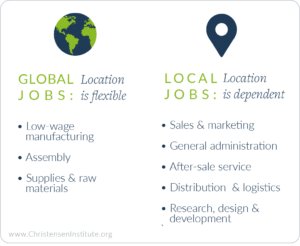Shortly after President Trump won the election to become America’s 45th president, he worked out a deal with the CEO of United Technologies, Carrier’s parent company, to reverse plans to shut down a furnace manufacturing plant in Indianapolis. Shutting down would have saved Carrier an estimated $65 million, but the company stayed after a mixture of threats and incentives it received from the new administration, resulting in hundreds of jobs remaining in Indianapolis. That was a win for the incoming president and there was hope in the air that the tough negotiator would bring back or, at the very least, save many American jobs. Fast-forward 20 months, and the working conditions at the Indianapolis Carrier plant are so depressing that workers don’t feel like going into work.
Ms. Hargrove, a 15-year veteran at the plant, told the New York Times that, “People aren’t coming to work, which is sad because we really need these jobs. They [the workers] had a chance to prove that staying was good, but this is ruining it for everybody. It’s killing us. It’s pushing us out the door that much sooner.” The article also reports that morale at the plant is depressingly low, which is killing productivity. Why is absenteeism so high at the plant when the president personally lobbied to help the workers keep their jobs? Why is morale so low when jobs at Carrier’s plant pay roughly a third more than most typical local jobs, according to the Times? Shouldn’t the workers at the Carrier plant be grateful that they have “good” jobs, and shouldn’t that gratitude be reflected in their work ethic?
In fact, I would argue that the low morale is understandable, since these employees understand that their jobs are dispensable. An understanding of the concept of local and global jobs provides some insight as to why this is the case.
Understanding local and global jobs
In my upcoming book, The Prosperity Paradox: How innovation Can Lift Nations Out of Poverty, my co-authors, HBS Professor Clayton Christensen and former HBR editor Karen Dillon, and I describe some of the key differences between local and global jobs. Before a new innovation is successfully introduced into a market, the innovation often requires people to design, test, manufacture, market, distribute, sell, and service it. The jobs created by the introduction of this new innovation are typically what keep our economies vibrant. But not all jobs are created equal. Our research suggests that economies that are built on the backs of local jobs tend to be more robust.
Local jobs are jobs that must be created in order to serve the local market. They are also jobs that are not as easily transferable or outsourced to other countries. For example, jobs in design, advertising, marketing, sales, and after-sale service typically fall into this category. They are often higher paying jobs when compared with global jobs.
Global jobs, as the name implies, are more easily moved to other countries to take advantage of lower wages. Manufacturing jobs, like those at the Carrier plant, and sourcing of raw materials are perhaps the most prevalent examples of global jobs. Call center customer service jobs are also examples of global jobs.
With the advances in global supply chain management, global jobs are often at risk of moving across national boundaries to the next most ‘’efficient,” or low cost, labor market. The footloose nature of global jobs puts employees in a difficult situation because they know their jobs can leave at anytime, and there’s little they can do about it. Paul Roell, a group leader at the Carrier plant, put it this way, “People still don’t trust Carrier. They [Carrier] still have the warehouses and the factory in Mexico, and they can move down whenever. We all know that Carrier has the money to do whatever they want.” By contrast, if Carrier’s employees had local jobs which are essential to support the marketing, sale, and service of innovations in a local market, their employment would be less vulnerable to the allure of lower wages elsewhere.
To further illustrate the dispensable nature of global jobs, I wrote in a previous blog that Lowell, Massachusetts was once an industrial hotspot. In the 1850s, Lowell was home to more than 10,000 textile mill workers—global jobs. But when investors saw they could take advantage of lower labor costs in the Southern United States, Lowell lost those global jobs. And when investors saw that they could take advantage of lower wages in Taiwan, South Korea, and China, the Southern United States lost those global jobs, too. But consider what has happened to local jobs in the process. Today the apparel and footwear market value in the United States is worth more than $350 billion and supports approximately 1.4 million jobs. Most of those are local jobs.
Carrier’s employees are right to fear for their sustained employment, but saving their jobs in the short term may not serve them best, or their local economies. What would happen if instead of just saving global jobs like theirs, where the economics can only work temporarily, we focused our efforts on creating many more local jobs, too? How might that impact the morale of employees? How might that impact the vibrancy of our local economies?



